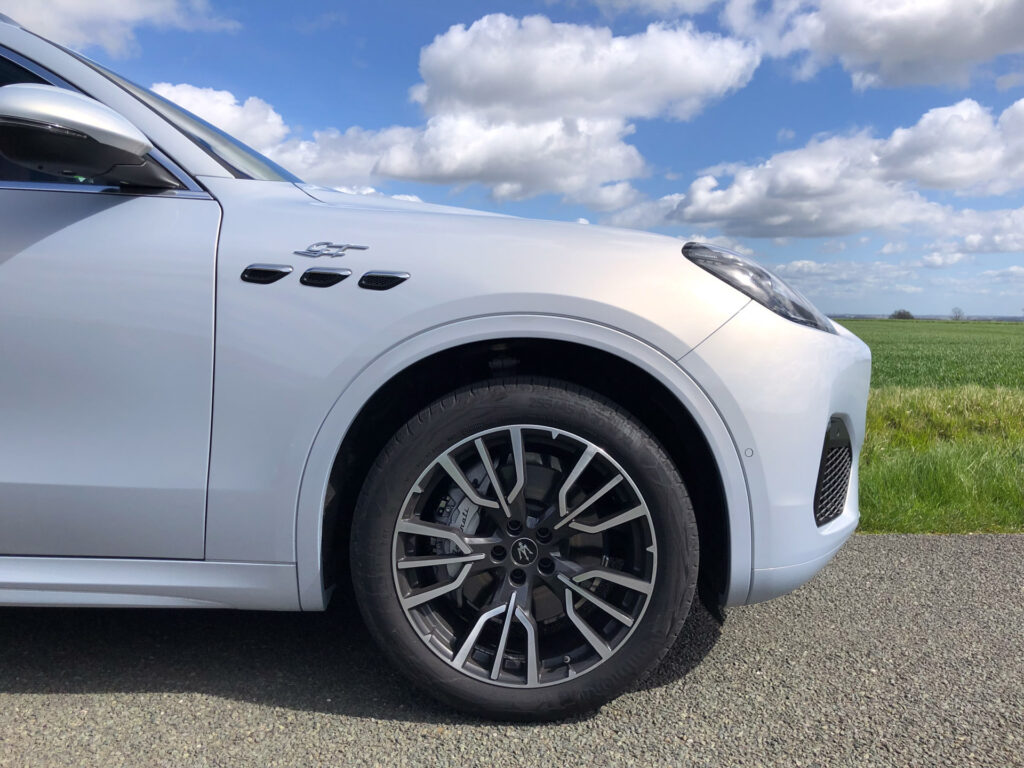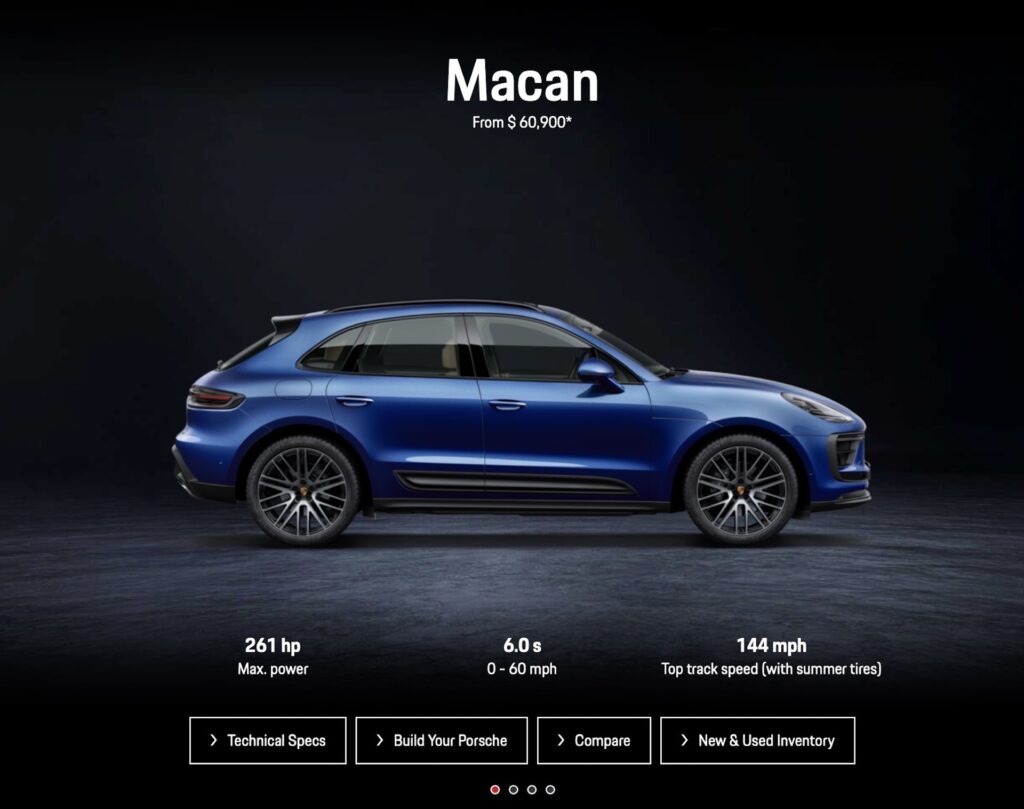Entry-level Grecale shares plenty with Alfa Romeo’s Stelvio, but offers more room and a heap more interior flair
4 hours ago
 –>
–> 
–>
Maserati was supposed to be selling 100,000 cars a year by 2022. That’s the target it set back in 2018. The real 2022 figure – admittedly not helped by the global supply crisis – turned out to be just 23,400.
But things really could be about to change. I know it feels like we’ve heard that, oh, 100,000 times, like when the Ghibli sedan was announced, and then the Levante, and neither really delivered on their promise. But this time the omens are good. The arrival of the mid-engined MC20 has given the brand some extra credibility with younger (ie. sub-70) buyers, and Maserati has now entered one of the hottest market sectors in the world with the Grecale compact SUV.
What is the Grecale?
In concept it’s most easily explained as a Porsche Macan rival. In execution it’s a slightly bigger Alfa Romeo Stelvio with some useful technical and luxury improvements, including mild-hybrid tech and an electric turbocharger working alongside a regular one. Sounds interesting on paper but does it live up to that promise? We grabbed the keys to find out.
advertisement scroll to continue
Like the Macan, the Grecale is available in multiple flavors, though all-wheel drive and combustion power is a common thread – a Folgore EV variant goes on sale soon to battle the Macan EV. Most of the coverage at the international launch last year was devoted to the 523 hp (530 PS) V6 Trofeo, but that’s a £99,700 ($105,500 in U.S.) machine. Most buyers will be rocking rather fewer horses.
Both of the other models are powered by a mild-hybrid 2.0-liter four-cylinder engine making either 296 hp (300 PS) in the entry-level £61,570 ($65,300) GT, or 326 hp (330 PS) in the £67,810 ($74,900) Modena, which also gets adaptive dampers, an upgrade to 20-inch wheels, black chrome trim and a limited slip differential. Our tester was the entry-level GT with optional 20s.
Outside and in: first impressions?
For a new car, the Grecale looks kind of chintzy and dated in the metal, though that could be partially down to our car’s spec, in particular its blend of Bianco Astro paint and bright chrome. The Modena and Trofeo versions look much cooler, or at least in pictures. It’s also a little chunky around the rear end, not taut and lean like a Porsche Macan, but it’s hard not to like the GranTurismo-style grille and the classic triple Maser vents on the front fenders.
As we mentioned earlier, the Grecale rides on the same platform as the Alfa Romeo Stelvio, but it feels superior in a couple of ways. The first is the general look and feel of the interior. The triple-screen setup (gauges, infotainment and HVAC) reminds you that it’s much more modern than the Alfa, and the materials are mostly better too.
It’s not perfect, though. While the infotainment system looks slick and is pleasingly responsive, I think Maserati has gone too far with the touchscreen factor, throwing the controls for the lights into the climate display, for instance, and the switches on the steering wheel’s upper spokes are disappointingly cheap. I’d also like to be able to drop the seat much lower for a sportier driving position, like you can in a Porsche Macan, and the gearshift selector is seriously dull. Pushing a bunch of buttons located between the two console screens to switch from drive to reverse feels really unsporty, though the sexy aluminum shift paddles do their best to make amends.
More: Maserati Grecale Folgore Debuts As A Spicy Italian Electric Crossover
But then we get to the other advantage over the Stelvio (and the Macan): space. Jump in the back seat or open the rear hatch and you’ll really see and feel the difference Maserati’s engineers have made by stretching the wheelbase of the Stelvio’s Giorgio platform 3.3-in (83 mm) to 114.2 in (2,901 mm). That stretched wheelbase is bigger than a Porsche Cayenne’s, never mind a Macan’s, so it’s no wonder that by class standards the Grecale is a genuinely roomy car. The question is, can it put space between itself and its rivals on the road?
Fire her up, then!
Fire her up? Okay, just as long as you temper your expectations. We’re driving the four-cylinder version, remember. And to be honest, even with that thought in mind, the first impressions aren’t great. The direct injection engine chunters away sounding more like a hyper-refined diesel than something worthy of the Maserati badge, and a blip of the throttle reveals a pronounced flywheel effect.
Fortunately, things get better on the move. That’ll be down to the solid 332 lb-ft (450 Nm) of torque that’s available from 2,000-4,000 rpm and helps even this entry-level Grecale feel usefully muscular in the mid range. It’s fairly strong from a dead-stop, too, considering there’s 4,123 lbs (1,870 kg) of metal to get moving. Maserati claims zero to 62 mph (100 km/h) in 5.6 seconds for the GT (5.3 seconds for the Modena), but in a bit of unscientific research on a country road I logged 5.1 seconds on the Grecale’s on-board performance meter, plus 13.3 seconds to 100 mph (161 km/h).
There’s still some turbo lag, despite the best efforts of the mild-hybrid system and electric turbo to fill in the off-boost lethargy, and the 48-volt starter generator won’t let the Grecale drive meaningful distances on electric power alone. As for economy, well it’s no miracle worker there, either. The best we saw was 28.3 mpg UK (23.6 U.S.) on a motorway cruise, which is probably better than you’d get out of a 2.0 Macan in similar circumstances, but not by much.
Great handling balance, surprisingly comfortable

Related: Maserati MCXtrema Limited-Run, Track-Only Supercar Sounds Like a Pro Twitch Gamer
But one other benefit of the mild-hybrid system is that the battery and DC converter are both located near the rear axle. Why does that matters? Because although it eats into the load space (the non-hybrid Trofeo’s luggage bay is bigger) it helps with the weight distribution. Combine that with an engine that’s located almost entirely behind the front axle line and you’ve got the recipe for an SUV with a refreshing eagerness to change direction.
We’ve no doubt that the posher Grecales with their adaptive dampers extra power and limited slip rear diffs are more fun, but even this basic car has a nice natural balance that lets you tuck the nose into an apex and then lean on the outside rear tire on the way out. It’s decent fun, but it could be better. We’d like a bit more steering weight and the brakes feel too soft and spongy, not firm like a Porsche’s.
But the ride comfort is definitely worth some praise. Even on the standard passive dampers and equipped with a wheel upgrade from 19s to 20s (normally a disastrous move for most passive-damper cars) our GT felt nice and supple – and infinitely less harsh than my Mazda CX-60, which has a similar setup.
What’s it up against?

I drove the Grecale in the UK where the range kicks off at £61,570. For context, the same money buys a 375 hp (380 PS) V6 Macan S, or a Macan base or T with a ton of options. Sure, the Porsche is smaller, but it’s difficult to argue against that kind of deal, and most people won’t. We probably wouldn’t either.
But in the U.S. it’s a slightly different story. The $65,300 (excluding shipping) Grecale GT is priced between the base Macan and Macan T, neither of which has much drivetrain charisma, and the Macan S is $7k more. Suddenly the Maserati looks like a more appealing proposition, although there are still plenty of desirable alternatives. A 382 hp (388 PS) BMW X3 M40i that flies from zero to 60 mph in 4.4 seconds for $61,900 is tempting, even if it doesn’t have the Maserati’s glamorous badge.
Which £65k/$65k SUV would get your cash? Drop a comment below and let us know.

 <!–
<!– –>
–>